Many great stories have fantastic fantasy weapons. Ones forged of magic or with fabled materials. Some have grand names and histories behind them.
These weapons are popular in the fantasy genre, and in this guide, we’re going to dive back in time to the medieval period to look at some common—as well as uncommon—medieval fantasy weapons, all with the aim of helping you with ideas for your own stories.
This is a comprehensive guide to fantasy weapons, though I’m sure some of you will be annoyed I’ve left out your favourites. Still, it looks at some of the lesser-known yet effective tools of destructions, all with the aim of helping you find original angles with your fantasy writing.
We’ll finish the guide with a look at some interesting and cool fantasy weapons that people have come up with.
Choose A Chapter
- Fantasy Weapons – What Are They?
- Top Tips On How To Create Your Own Fantasy Weapon
- A Medieval And Fantasy Weapons List
- Types Of Fantasy Weapons
- How To Design Fantasy Weapons
- Cool Fantasy Weapons
- More Guides On Medieval And Fantasy Weapons
Fantasy Weapons – What Are They?
When we think of fantasy weapons, our minds may wander to magic swords or the staffs of wizards or witches.
You may also picture elegant elven bows or the enchanted axes of dwarves.
Some of these fantastical weapons may have names, like Oathbringer, Andúril or Excalibur.
The point I’m trying to make here is that fantasy weapons offer the reader something more, something unusual and distinct from the ordinary.
We’ll look at some ways to create different types of fantasy weapons below, but if you keep this principle in mind, you can’t go wrong. Let’s look at an example from the fantasy genre:
Top Tips On How To Create Your Own Fantasy Weapon
When it comes to creating your own fantasy weapon, there are a few things to keep in mind which may help you with the process:
- It helps to begin with something you’re familiar with, like a sword or bow. Understand how it’s used. For example, some swords, like rapiers, are designed to stab. Others are designed to slash.
- Think of ways to make the ordinary extraordinary. Here are some prompts:
- Does the fantasy weapon grant the wielder powers?
- Is there something special about wielding this sword, e.g. lightness?
- Is it made of a unique type of material?
- What does this unique material offer, e.g. it can cut through rock?
- Does the weapon respond differently to other people?
- Does it carry some kind of enchantment, such as a healing or protective ward spell?
- Was this weapon forged in a unique way or by a fabled blacksmith or enchanter?
- Breathe life into your weapon.
- Try giving names to your fantasy weapons
- Or try giving them a past. Who has wielded it before?
- Is it widely known across the land? Does it have a reputation?
A Medieval And Fantasy Weapons List
The development of weapons in the Middle Ages resulted from the advancement in medieval armor, which you can read about here.
The trusty sword was no match for the walking tanks that were knights, unable to pierce, smash or crack the plated armour they covered themselves with.
In fact, a shortsword, thrust at arm’s length with both hands, could puncture plated armour by a mere inch—and the blade would be stuck there too.
So weaponsmiths the world over went back to the workshop to devise weapons to defeat the armoured warrior. Let’s take a look at some of them.
Falchion
This weapon has cropped up before when we looked at archery. The falchion was a single-edged blade, around 24 to 30 inches long and weighing around 5 to 8 pounds, which is a little lighter than a large bag of sugar.
The falchion was designed to combine the technique of a sword with the weight of an axe, and proved very effective against chain mail, able to cleave right through it. When faced against plated armour, however, it ran into sticky ground. Like the shortsword, the blade would lodge into the armour, and a wielder unable to yank it free would present his armoured foe with a glorious opportunity to kill them.
Broadsword
Also referred to as the basket-hilted sword, this was a blade that had a broad base before narrowing into a wicked, sting-like point.
The purpose of the basket hilt crossguard was to give some protection to the hand. A skilled wielder was required, and a skilled bladesmith too—the finest steel had to be used, otherwise, it would shatter in combat.

The broadsword inspired the development of a blade known as the estoc, also known as the English tuck. This lengthy blade had a signature cruciform hilt requiring two hands. It was edgeless with a sharp point designed to pierce armour. It was, however, a little impractical in the bloody heat of battle.
The estoc holds similarities to the rapier and sabre, both weapons more at home in the realm of fencing than on the battlefield.
Can you see yourself adapting this to make your own fantasy weapons? What magical enchantments could you give a sabre, for example?
It’s one of the medieval fantasy weapons that feature quite often in the genre. Prince Arutha in Raymond E. Feist’s Riftwar Cycle famously wielded a rapier, and to legendary effect.
Mace
One of the ways to defeat plated armour was by crushing it, and that was something a mace could do. It developed out of the crude, yet effective, wooden club, and was at one time favoured by priests who preferred weapons that did not draw blood (but crushed skulls instead. Yeah, real holy, guys.)
The mace came in a variety of styles. Some were spherical or oval, covered in spikes or ribs. They tended to be made from steel, weighing between 4 and 6 pounds, which is about the weight of a table lamp—lighter than you think.
A blow to an unarmoured foe would be lethal, and against plate would certainly cause a concussion, bruising, or even haemorrhaging. It was designed for close, aggressive combat, used in accompaniment with a shield. It could even deflect blows from swords.
On its own, however, it wouldn’t be enough to kill an armoured enemy. Knocking them to the ground was the aim so they could be finished off quickly with a dagger through the visor, eye slit, or weak spot, such as behind the knees, armpit, under the breastplate or if you’re a cruel bastard, the groin.
The Flail
Similar to the mace, the flail was also a weapon inspired by its cruder predecessors. It was an ancient agricultural tool, consisting of a wooden club hinged to a long staff by rope or chain. Some sadistic prick decided to replace the club with a spiked ball, and voilà, you have yourself a killing machine.
In the medieval military world, it became known as the ball and chain, and many variations were developed, the most common being the above: single-handed with a handle of about 3 feet in length and a reach of around 2 to 4 feet.
The chain at the end was wrapped around the wrist. It had the lovely nickname ‘The Holy Water Sprinkler’ (bloody priests at it again). Some variations even had two or even three spiked balls at the end.
This was a dangerous weapon, not just for a foe, but for the wielder too. The swinging arm had to remain extended at all times, and that ball had to keep on swinging—the higher the speed the easier it was to control, paradoxically.
Coming up against it must have been terrifying, with one eye on the spiked ball flashing left and right, and the other eye on the wielder. It did, however, make for a rubbish defensive weapon, unable to deflect blows, and if the swinging stopped for a moment, your foe had a chance to attack. It was bloody exhausting to use too.
I would regard this as one of the lesser-used medieval fantasy weapons, and given its brutal effectiveness, it’s one that could be featured to good effect in stories, especially with a magical enchantment to aid its wielder.
Warhammer
No, not the game. This weapon was also inspired by cruder versions, the wooden mallet in this case. The warhammer had two different features: a flat head—the hammer side if you will—which with some variations had serrations to bite into armour, and; the other side which consisted of a long narrow spike, known as ‘The Crow’s Beak’, designed to puncture plate.
Warhammer
It was light enough to carry one-handed, most effective in quick combinations—a blow to stun with the hammer, followed by a ruthless puncture.
As with all weapons designed to pierce armour, it had its downside. The wielder had one chance to land the killing blow. If the point became lodged your foe had a nice opportunity to strike back. Killing is never straightforward, is it?
Now a warhammer would make for one of the cooler medieval fantasy weapons, don’t you think?
Spears
Spears, in short, were useless against plated armour. The points lacked the sharpness to pierce and couldn’t generate enough power to penetrate. The long wooden shafts could also be sliced by blades.
The Germans took these problems into account and developed an interesting weapon called the ahlspiess, which translates to the ‘eel spear.’ It was around five feet long, weighing around 8 and 10 pounds. It consisted of a sharp point at the end of a slender blade, with a crossguard and wooden haft.
With this weapon, the wielder could aim for weak spots in armour, or pierce right through it. The downside was that it was pretty heavy, with all the weight at the business end, and it was two-handed, so defensive options were limited.
Billhook
We come to probably my favourite of all these oddities: the billhook.
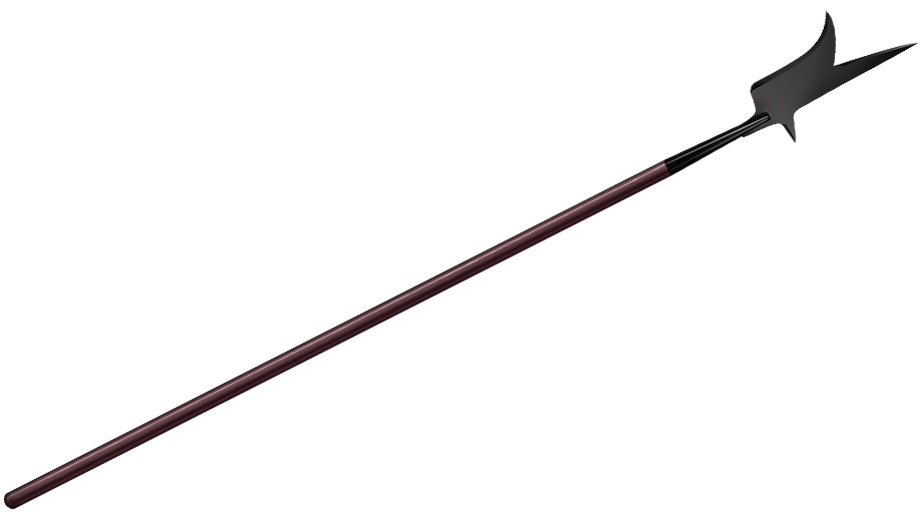
Billhook
As with a lot of these weapons, the billhook began its life as an agricultural tool, one that’s still used today.
It consisted of a long, single-edged blade with a curved end, branching off into a spike. At the back of the blade is another, smaller spike, known as a fluke. It was around 6 to 8 feet long and weighed around 10 pounds.
Being an agricultural tool it was quite easy to make. This weapon provided flexibility in the attack, able to thrust, slash and deflect. Perhaps the most effective feature was its ability to hook onto armor.
It was capable of deadly combinations with the top spike able to pierce plate if used with enough force. The fluke at the back was also used for stabbing. The billhook was also very effective against cavalry, able to sweep riders from their saddles.
The downside was it required two hands, so parrying was important to make up for the lack of a shield. If a blow was blocked, it had to be swept away. It was also pretty useless against thrusting blows.
Of everything on this list, I think the billhook takes the crown as one of my favourite medieval fantasy weapons. I used them quite a lot in Pariah’s Lament and adapted them so they could be used with a shield.
Shields
When you think of a shield you think of its ability to block projectiles and blows, but in fact, it was quite an effective offensive weapon.
Shields have been around for over 4,000 years, still used today by the police. Over the course of this period they’ve had to contend with lots of different weapons—arrows, javelins, throwing axes, heavier Dane axes, maces, swords … the list could go on. Two qualities were necessary from a shield: strength and lightness.
To achieve this magic combination a variety of materials were used. One of the earliest was linden wood. This material is extraordinarily light and flexible. Linden shields were held together with a glue made from cheese. Unsurprisingly, they didn’t last long in battle, shattering when struck by arrows, or any blow for that matter.
To achieve extra strength, linden shields were wrapped in the untreated hide of a cow—it had to be from a cow, much tougher than sheep, for example. This did, however, add a fair bit of weight, but could absorb blows from projectiles, but against heavier attacks shattered.
The shape of a shield was important to its strength. Lenticular—like the lens of an eye—provided the flexibility a shield needed to stop from shattering.
Other shapes include much smaller, circular shields, known as the buckler. It was used almost as an extension of the wrist, useful for deflecting blows rather than blocking them head-on. It could also be used as a steel fist.
The kite shield was introduced by the Vikings with clever purposes in mind. During the Battle of Hastings, the Anglo-Saxons stood firm with their shield wall, something we’ll come to shortly, so a tactic adopted by the Vikings was to have cavalry charge at the wall, hurl projectiles, then beat a retreat. The kite shield provided protection to the flank of both mount and rider as they charged and fled.
We return to the shield wall, perhaps the most effective use of shields in history. It was capable of being taught to individuals with no military experience in a short space of time, and proved difficult to break down. It was the primary military tactic in Anglo-Saxon Britain.
A line of warriors stood abreast with shields interlocked, one overlapping the other. If someone tried to pull a shield forwards it wouldn’t move. Likewise, if they charged it stood strong. It did, however, require incredible teamwork. If a single gap in the wall appeared, the floodgates opened.
There were different tactics for the shield wall. A straightforward line could be adopted, though this was vulnerable to flanking manoeuvres and cavalry charges. To counter this, the line could be moved into rows, forming a dense formation. If a horse charged into the fray, they’d lost their momentum, become trapped and quickly killed.
A tactic to defeat the shield wall was known as the ‘Boar’s Snout’. This involved a narrow charge into one section of the wall, pushed forwards by the men rushing behind. The idea was to burst open the wall like a blister.
Types Of Fantasy Weapons
When it comes to working out how to create fantasy weapons, looking into the past at the likes of medieval history can really help. Fantasy borrows so much from that time period, and medieval weapons dominate the genre.
That, in turn, has inspired a whole bunch of awesome medieval fantasy weapons, boasting enchantments and magical perks for the wielder.
By building up a sound understanding of how these weapons work, we can then turn around and think, “how can I make this my own?” Knowing how a sword was used in warfare enables you to think about your own modifications—adding serrations, for instance.
And from a writing perspective, it really does help when it comes to thinking of the influences of magic and magical enchantments and how they might enhance your fantasy weapons.
You can conjure ways of improving upon a weapon’s effectiveness. Crossbows, for example, took an age to reload—you pretty much had to winch back the string, which took what feels like an age on the battlefield. So could you introduce a self-reloading enchantment, for example?
What about fantasy swords? Some bestow special powers and abilities upon their users. I always recall Tomas in Feist’s Riftwar Saga, who took upon the great warrior skills of Ashen Shugar. Some swords in fantasy focus more on their forging.
Think of Valyrian steel in Game of Thrones, for example. And other fantasy swords have much to do with who forged them, and who they are for. Glamdring, Gandalf’s sword in Lord of the Rings, was forged for the great Elven king, Turgon, as an example.
Below, you can find some great images of original fantasy weapons. Hopefully, they may spark some ideas for you. You can also find out lots more on Pinterest. I’m forever expanding my list of fantasy writing inspiration board, so if you’re after ideas click here to find them.
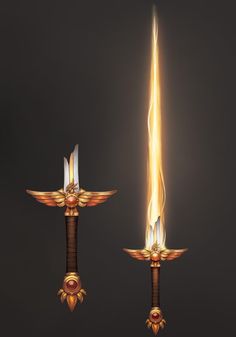
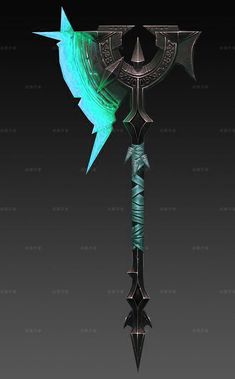
How To Design Fantasy Weapons
Designing fantasy weapons is a crucial aspect of world building and can add depth and excitement to a fantasy story. However, there are some important things to consider when coming up with your design.
For example, it’s important to consider the culture that created it. Different cultures may have different priorities and needs when it comes to a weapon, and this can impact their design. For example, a nomadic culture might require lightweight and easy-to-carry weapons (like spears or bows), while a heavily-armored culture might need weapons that can penetrate armor (like axes or maces).
Real weapons can provide excellent inspiration for designing fantasy weapons. Look at the shapes, materials, and techniques used in traditional weapons from different cultures and time periods. For example, a katana-style sword could inspire a fantasy weapon used by an honor-bound warrior culture.
Fantasy weapons often have magical properties that make them unique and powerful and it’s well worth exploring when designing your own. Consider what kind of magical element you want to add to your weapon and how it might impact its design. For example, a weapon that can control fire might have a flame-like design or be made of a heat-resistant material.
In adding these elements you’ll invariably create a fantasy weapon that’s distinct and memorable. Think about what sets your weapon apart from others in your story or in other fantasy books. For example, Drizzt Do’Urden’s dual-wielding scimitars, Icingdeath and Twinkle, from R.A. Salvatore’s “The Legend of Drizzt” series are unique because of their magical properties and their wielder’s fighting style.
Although fantasy weapons are often larger than life and fantastical, they still need to be functional. Consider how your weapon would be used in combat and how it could be wielded by its user. For example, a giant, heavy hammer might look impressive, but it might not be practical for a small character to wield.
Cool Fantasy Weapons
You may have found yourself playing a computer game, like Final Fantasy or The Elder Scrolls, or maybe watching a TV show like Game of Thrones, and you’ve encountered a weapon that you could only describe as cool.
I’m talking interesting material choice (like obsidian or dragonglass), an intriguing design (like Sephiroth’s Masamune in Final Fantasy VII, or Cloud’s Buster Sword), or a magical ability that’s attached to it—I was always a fan of the health-draining perk you could enchant weapons with on Skyrim.
The idea behind these cool fantasy weapons is to give them that extra feature that elevates them above the rest. Here are some ideas to get the cogs of your mind turning:
- A bow that can shoot with greater velocity, accuracy or distance
- An axe that returns to your hand when thrown
- A sword that can drain energy from an enemy
- A spear that can twist and turn like a serpent
- A blade made from an ancient material that carries with it magical abilities
More Guides On Medieval And Fantasy Weapons
Below, you can find some more guides on fantasy weapons and medieval weapons that you may find useful. Thanks for reading!
- Click here to read more about medieval weapons
- An article from Warwick University on the medieval werewolf
- An introduction into the medieval period
- Click here for a guide to castles and keeps
- A guide to creating a fantasy map
- Or head here to learn more about sieges
- If you like orcs, check out this name generator tool
- Head here to learn about the writing community, r/worldbuilding
- What does foreshadowing provide the reader in a story?
- A complete guide to worldbuilding, with a template
- The lives of medieval lords
- How were women treated in the Middle Ages?
- The lives of peasants in the medieval period
- A guide to medieval castles
- A complete guide to medieval cannons
- Siege warfare
- Roman battle tactics
- How to build a fantasy world
Thank you for reading this guide to medieval fantasy weapons. If you have any questions, please feel free to contact me, or join our writing group!
- 5 Tips to Help Your Child Learn and Succeed at Primary School - February 26, 2024
- The Advantages Of Using An AI Essay Typer Alternative - February 14, 2024
- Advice On Getting Help With Your Homework - January 26, 2024

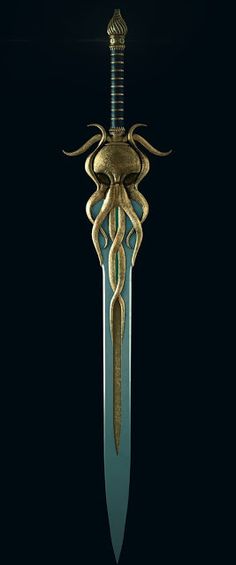
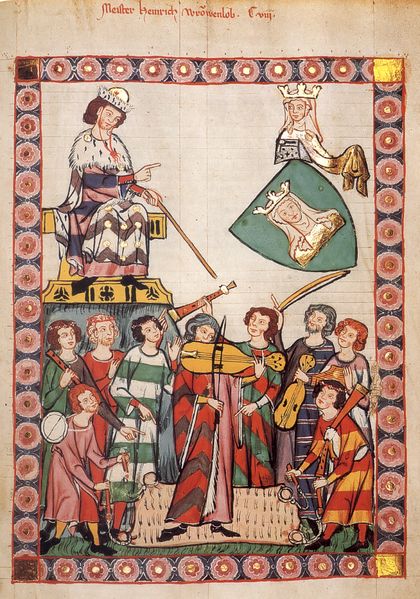
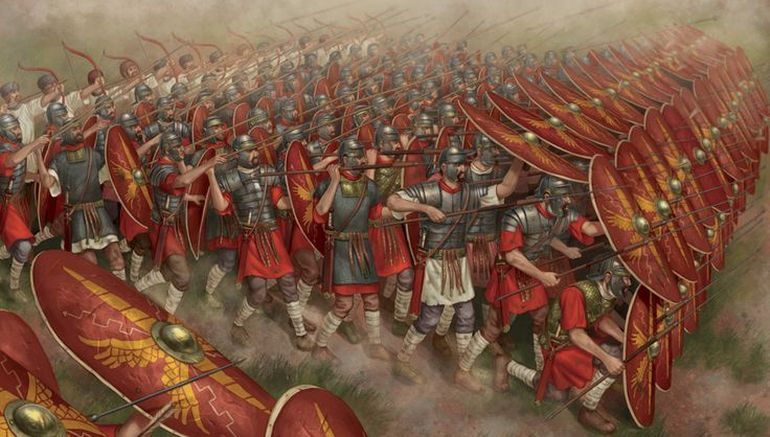

Pingback: A fantasy writer’s guide to … Castles and Keeps: part one – Richie Billing
I’d say they were real. It’s an ancient farming tool and no doubt would have been used in some kind of conflict
Pingback: A World-Building Treasure Trove – Richie Billing
Pingback: A Guide To Writing Fight Scenes – Richie Billing
Pingback: A Guide to Worldbuilding – Richie Billing
Pingback: Naming Fantasy Characters #AuthorToolboxBlogHop – Richie Billing
All very interesting. I love these little tidbits of knowledge. Interesting how many times I’ve seen a shield wall in movies but never thought, it must have a name.
Thanks Raimey! I enjoy all of these little details too and sometimes they can be quite underused by writers. There’s so much to be tapped into!
This was a fascinating read and really well put together! I love finding out where weapons come from and their usage. It’s wonderful to see all this info in one place. Thank you for sharing this!
Thank you Lena! That’s very kind. It fascinates me too. And when it comes to writing it can give you so many ideas. I’ve used a few details about cannons from the Middle Ages in my novel, which hopefully works! Only time shall tell
Pingback: A Fantasy Writer's Guide to Armor - Richie Billing
Pingback: A Fantasy Writer's Guide to Castles and Keeps: Part One - Richie Billing
Pingback: The Races of Fantasy: Re-Use, Recycle or Rubbish? - Richie Billing
Pingback: The Ultimate Guide To Fantasy Armor | Richie Billing
Pingback: The Medieval Lord - The Complete Guide | Richie Billing
Pingback: Killer Diseases of the Middle Ages | Richie Billing
Pingback: Medieval Cannons: The Essential Guide | Richie Billing
Pingback: The Lives Of Medieval Peasants - Richie Billing
Pingback: Excellent Examples Of The 5 Senses In Writing - Richie Billing
Pingback: Men Writing Women Characters - Never Make These Mistakes! - Richie Billing
Pingback: Roman Battle Tactics - Richie Billing
Pingback: Unveiling the Mysteries: Boeing’s Sword in Dragonheart – EclipseAviation.com